Jess Smart Smiley's Blog, page 6
February 4, 2021
Parenthesis by Elodie Durand (Book Review)
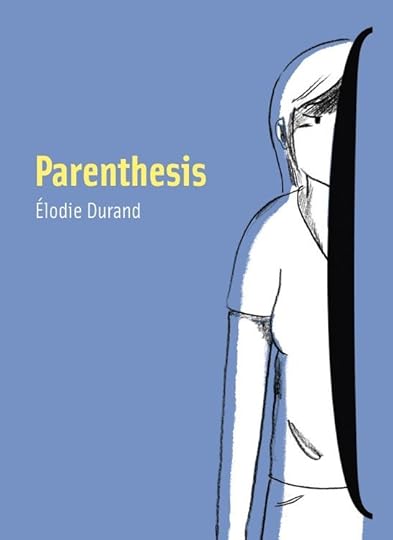
Winner of the Revelation Prize, Liberation Readers’ Prize, and Poland Prize from the Angoulême International Comics Festival and named one of FNAC’s “Top 10 Graphic Novels About Illness”!
From the publisher (Top Shelf):
A triumph of graphic memoir, Parenthesis narrates the author’s experience with tumor-related epilepsy–losing herself, and finding herself again.
Judith is barely out of her teens when a tumor begins pressing on her brain, ushering in a new world of seizures, memory gaps, and loss of self. Suddenly, the sentence of her normal life has been interrupted by the opening of a parenthesis that may never close.
Based on the real experiences of cartoonist Élodie Durand, Parenthesis is a gripping testament of struggle, fragility, acceptance, and transformation which was deservedly awarded the Revelation Prize of the Angoulême International Comics Festival. — a 224-page, B&W graphic novel with French flaps (6″ x 9″).
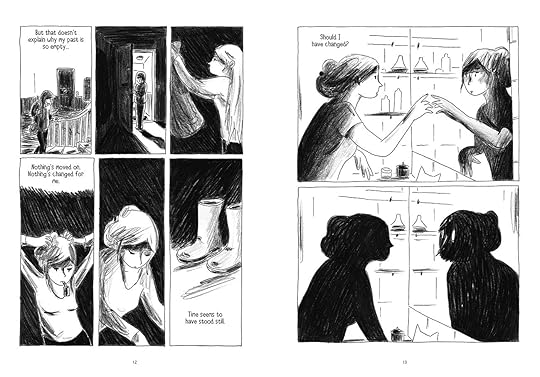

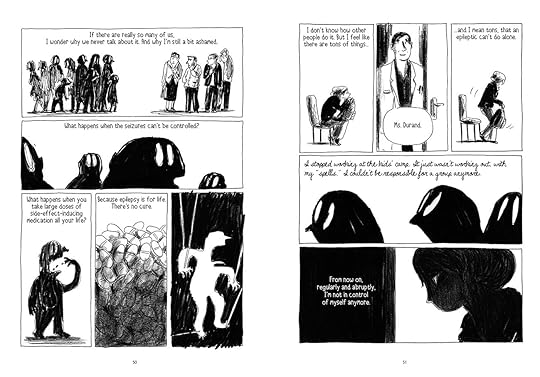
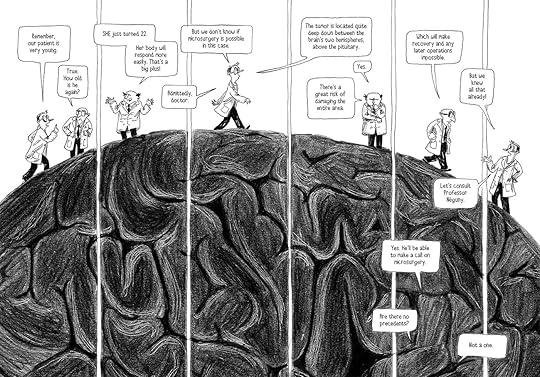
My Review
Parenthesis is a powerful, intimate glimpse into the creator’s experience with illness and recovery and the effects of such on the lives of her friends and family. The writing is direct and easy to follow and the artwork does a fantastic job in demonstrating Durand’s mental and emotional states as she navigates the confusion and exhaustion that accompany her illness.
In reading Parenthesis, I couldn’t help thinking of David B’s stunning graphic memoir Epileptic, which recounts growing up with his brother, Jean-Christophe, who suffered from epileptic seizures and the many medicines, diets, treatments, and other cares explored by his parents and attending physicians. Definitely worth checking out if you enjoyed Parenthesis, graphic memoirs, or the graphic potentials inherent in the comics form.
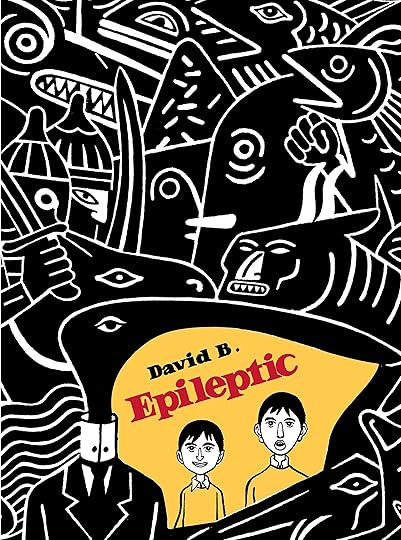
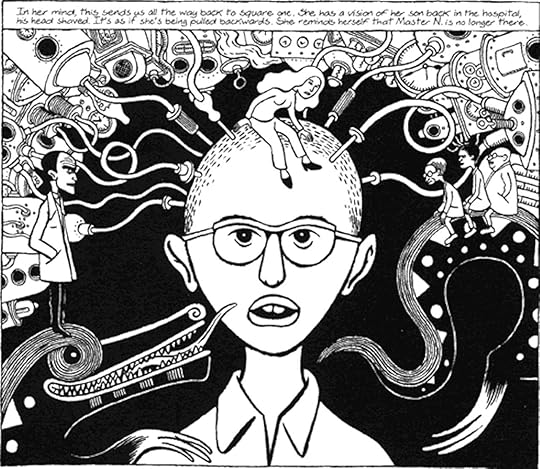
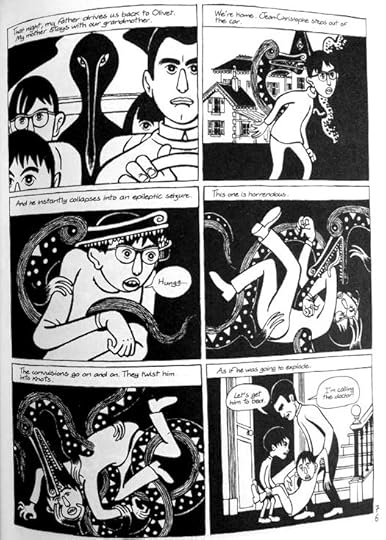
For tips on making your own graphic novel, check out my 7-part series on How To Make a Graphic Novel.
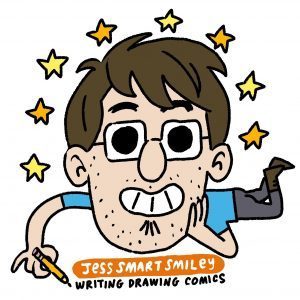
February 2, 2021
Getting the Most Out of Your Sketchbook
There’s a big difference between a sketchbook and a portfolio.
Growing up, I erased, scribbled over, and tore out my mistakes so that only my best work remained. I didn’t know any better at the time, but I could have gotten much more of out of my sketchbooks with a few simple tweaks.
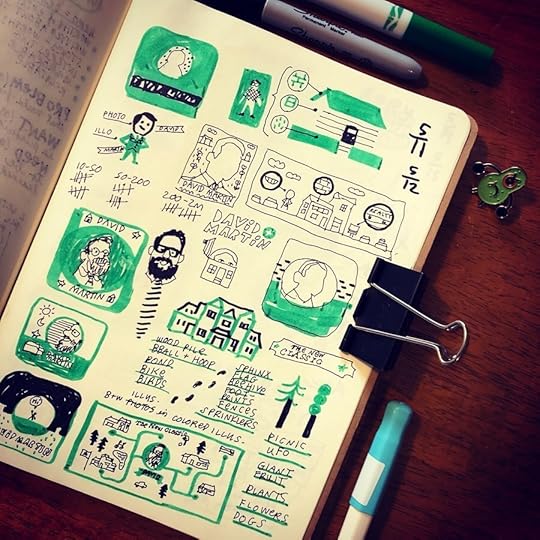
What I didn’t know growing up was that it’s okay to make drawing mistakes and that sketchbooks are the perfect place to make them.
Not knowing I was allowed to try things for the first time in my sketchbook, every drawing I made was a do-or-die experience. A pass-or-fail test. Inevitably, I messed up frequently and I ended up erasing and redrawing the same things over and over again, thinking I was a terrible draftsman. There were drawings I never completed because I knew I’d mess up. There were drawings I never even attempted because I knew I would mess up.
Unfortunately, I think that’s a pretty typical experience for most people.
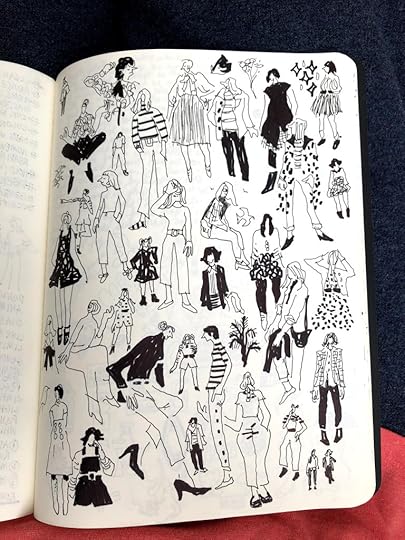
BUT! I learned in college that a sketchbook is a place—my own private playground where I can experiment, explore, discover, and even make mistakes. I can draw directly in ink and turn my “mistakes” into something else—or just leave them and move on.
My sketchbooks are just for me and I don’t have to share anything in them if I don’t want to.
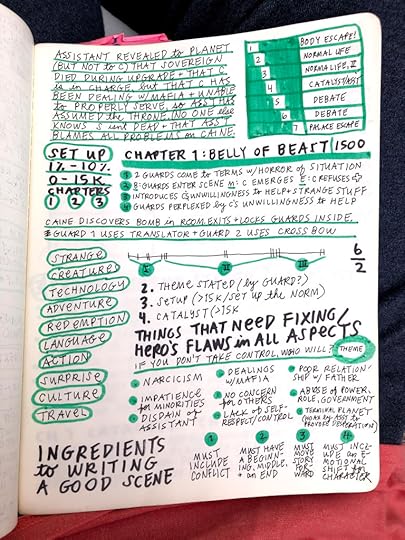
My sketchbooks are a place for me to think out loud of paper, without judging any of my ideas as “good” or “bad”. They are my journal, notebook, to-do list, calendar, sketchbook, and more.
If I write or draw something in my sketchbook, it is to record and catalogue an idea or to explore it.
By putting all my ideas down on the page—the “good” and the “bad”—I allow myself to see new connections between all the different ideas on the same page. The best ideas naturally stand out in some way and I might draw even more attention to those ideas by circling them, underlining them, or organizing them in some way.
Because I have “recorded” these ideas, I can come back to the page at any time and the writing and drawings will still be alive, right on the page!
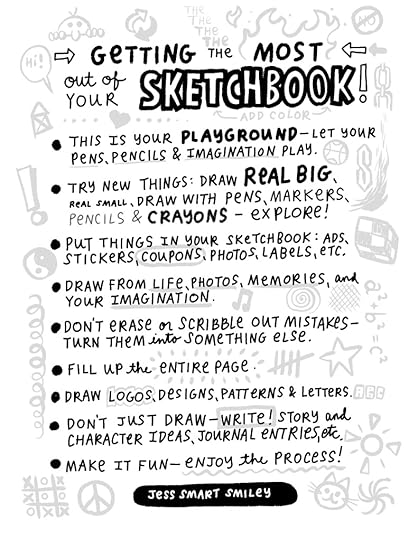 Download / Print
Download / PrintFeel free to download and print my guidelines for “Getting the Most Out of Your Sketchbook”. It’s something I give my drawing, writing, cartooning, and comic book students. (Keep in mind that these aren’t rules and they aren’t the only ways to use a sketchbook—they are simply approaches that have helped me and that I hope will help you.)
If I make something cool, I want the journey and process of making that thing to be enjoyable—that’s why I try to keep my sketchbooks fun and inviting.
How do you sketchbook? What do you use it for? Have you found an approach that works for you?

December 21, 2020
I Wrote a Novel!
I’m happy to share that I FINISHED WRITING THE ROUGH DRAFT of my gritty sci-fi adventure novel last night!
Clocking in at 175,000 words and exactly 700 pages, my sketchbook ideas are now fully fleshed-out characters, creatures, and technologies that make up a single, cohesive story.
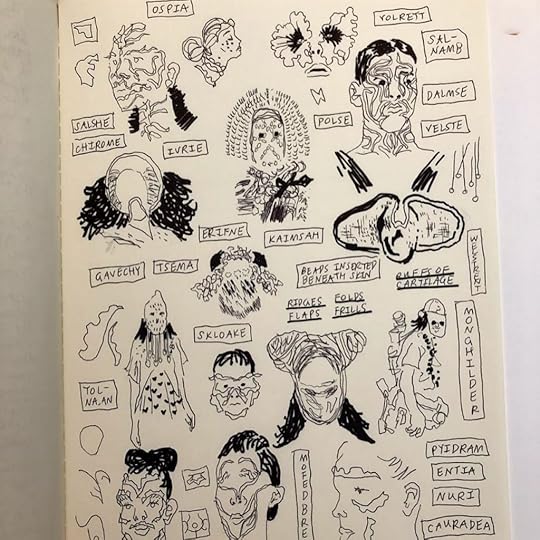
Is it perfect? YES!
Just kidding. Among other things, there are two entire chapters I’ll be throwing out (though there’s a chance they are their own novel-length story), large chunks of sloppy writing to rework, and there are some major continuity errors I’ll have to address—but at least it’s all on the page, ready to be improved.
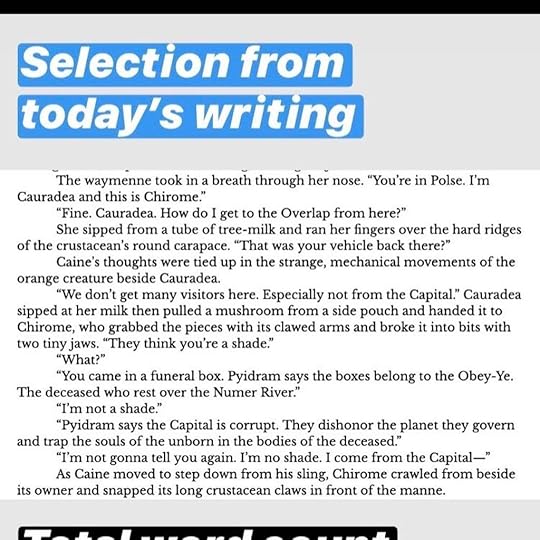
It’s been an incredible challenge for me to ignore my inner editor and change what I wrote yesterday instead of adding to the story today. It’s also been difficult to make notes on ideas for other projects without actively pursuing them. There were long weeks when I didn’t hit my daily word count goals, but other weeks when I was able to triple and quadruple my desired word count. It’s been a unique experience, focusing on words instead of pictures. I learned a lot about what works better for me and what kinds of constraints and obstacles I struggle with.
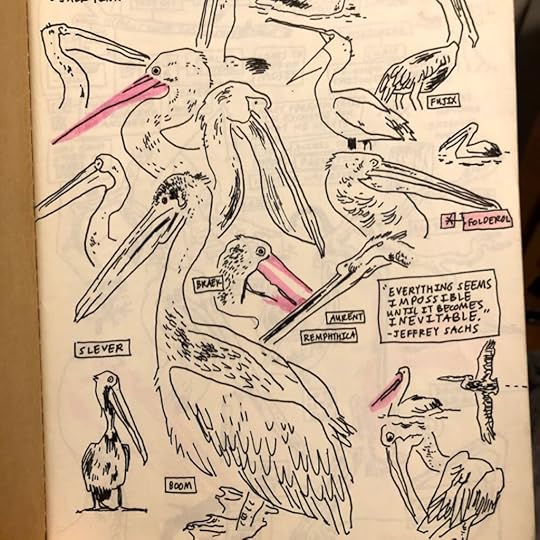
I’ve kept a few encouraging statements in mind while I’ve worked.
“I’m writing a first draft and reminding myself that I’m simply shoveling sand into a box so that later I can build castles.” (Shannon Hale)
“Never confuse a single defeat with a final defeat.” (F Scott Fitzgerald)
“Aim at something you will in fact do. Do it. Then, having succeeded, aim a bit higher.” (Jordan B Peterson)
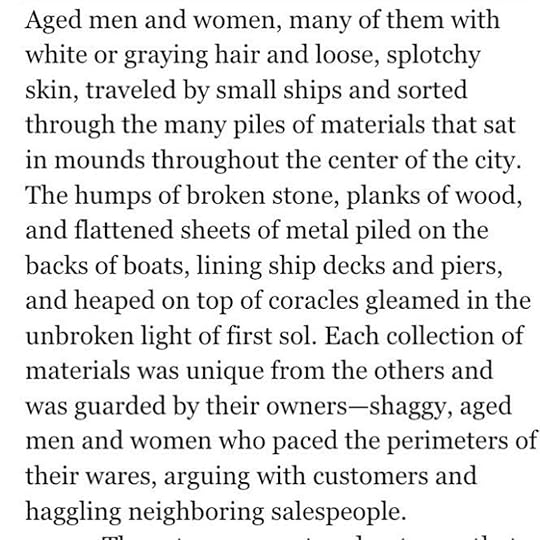
Of course, I still have a long way to go. I have other projects I’ll be focusing on for the next few months, then I’ll start into revising this novel. Once I’ve been able to polish the book enough, I’ll make the story available to members of the First Readers Club (who have already read 2 of my books before they’ve been published).
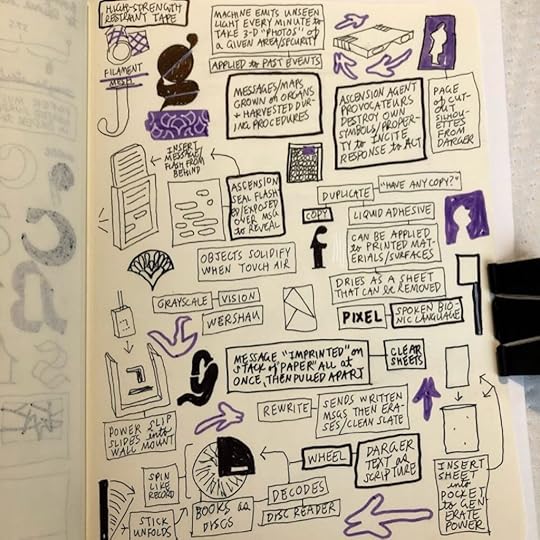
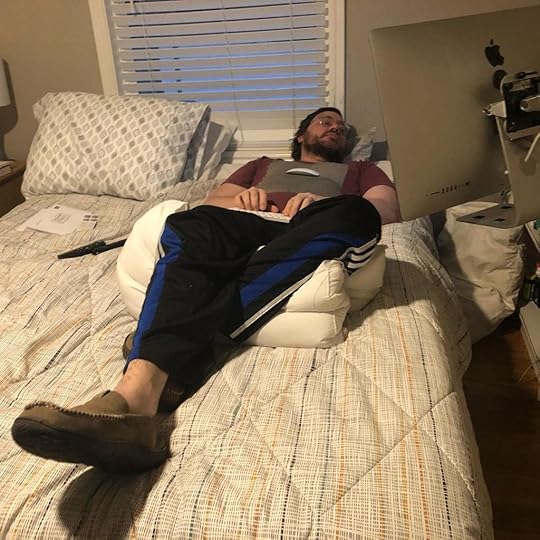
I’m sure I’ll post about the story here and there, but definitely sign up for the First Readers Club if you have any interest in reading the story before it’s published. I have some fun things planned going forward and I’d love to keep you involved.
Major thanks to my wife and family for allowing me time to write, and to Bonnie, Alicia, Caroline, and the lovely Writing Group I failed to keep going.

April 17, 2020
Sing Along / Play Along
I started a bunch of songs and want YOU to add to them. Sing over the top, warp what I’ve made, or add instruments and beats.
Get the songs and/or GarageBand projects here.
Share with your musical friends and family and let’s make some music together!
[image error]
February 5, 2020
GIVEAWAY!
I’m excited to share this Build Your Own Valentine Kit I illustrated for McNeil Printing. The kit comes with 4 blank cards, 4 blank envelopes, and 4 sheets of removable vinyl stickers.
[image error]
I’m giving away 2 Build Your Own Valentine Kits: 1 on Facebook and 1 on Instagram.
ENTER TO WIN by commenting on my post on Facebook and/or Instagram. That’s it! (Bonus entry for sharing the IG and/or FB posts.)
I’ll be picking winners at random and announcing the winners on Friday, Feb 7.
Special thanks to art director Jason Warren for the opportunity!
[image error][image error][image error][image error][image error][image error][image error][image error][image error]
[image error]
February 4, 2020
LAST CHANCE to Read My Next Graphic Novel—FREE!
This is your LAST CHANCE to be the FIRST to read my next graphic novel—for free!
There’s no catch. This is not a gimmick. I just want to hear your thoughts on my book before I send it to print. Sign up for my First Readers Club here or read on to learn more.
NOTE: NEW READERS MUST APPLY BEFORE 2/6/20. (Readers who apply after 2/6/20 will be added to the next available book.
[image error]
Last year was my first experience in reaching out for beta readers for feedback and I learned a lot along the way. (For those of you interested in looking for your own beta readers, you might be interested in my process for Making & Revising My Graphic Novel. My three-part article outlines how I made a rough draft in 3 weeks while stuck in bed, reached out to new beta readers, and used feedback from readers to improve the rough draft of my book.)
If all goes according to plan, then my newest graphic novel is going to make some serious waves in the world of middle-grade fiction. I don’t want to spoil it all here, but I want to offer you the opportunity to read my newest graphic novel before anyone else and before it’s published. This is your chance to do just that.
NOTE: NEW READERS MUST APPLY BEFORE 2/6/20. (Readers who apply after 2/6/20 will be added to the next available book.
This is my way of thanking you for following me and my work, and it’s a way for you to get involved in the creation of my next graphic novel in a fun and unique way. Think about it: with your thoughts and feedback, we’ll be making this book together. That’s pretty cool.
Getting involved is easy: click this link and sign up to read the book. That’s it!
January 29, 2020
Free Audiobook Downloads
I’m always on the hunt for another great book to read or to listen to while I work. Thank Heaven for these 1,000 free audio books via Open Culture, featuring books by Margaret Atwood, Isaac Asimov, L Frank Baum, Ray Bradbury, William S Burroughs, and more!
[image error]
[image error]
January 28, 2020
Read My Next Graphic Novel—FREE!
This is your invitation to be the FIRST to read my next graphic novel—for free!
There’s no catch. This is not a gimmick. I just want to hear your thoughts on my book before I send it to print. Sign up for my First Readers Club here or read on to learn more.
NOTE: NEW READERS MUST APPLY BEFORE 1/31/20. (Readers who apply after 1/31/20 will be added to the next available book.
[image error]
Last year was my first experience in reaching out for beta readers for feedback and I learned a lot along the way. (For those of you interested in looking for your own beta readers, you might be interested in my process for Making & Revising My Graphic Novel. My three-part article outlines how I made a rough draft in 3 weeks while stuck in bed, reached out to new beta readers, and used feedback from readers to improve the rough draft of my book.)
If all goes according to plan, then my newest graphic novel is going to make some serious waves in the world of middle-grade fiction. I don’t want to spoil it all here, but I want to offer you the opportunity to read my newest graphic novel before anyone else and before it’s published. This is your chance to do just that.
NOTE: NEW READERS MUST APPLY BEFORE 1/31/20. (Readers who apply after 1/31/20 will be added to the next available book.
This is my way of thanking you for following me and my work, and it’s a way for you to get involved in the creation of my next graphic novel in a fun and unique way. Think about it: with your thoughts and feedback, we’ll be making this book together. That’s pretty cool.
Getting involved is easy: click the link below and sign up to read the book. That’s it!
join the first readers club & read my next book
January 9, 2020
Making & Revising My Graphic Novel (3/3)
Read part 1 here, read part 2 here, or read on to find out how I used the feedback I collected from beta readers and used reader suggestions to improve my all-ages graphic novel.
Getting Feedback From Readers
I started getting reader feedback on the same day I sent out the link to the rough draft for my all-ages graphic novel The Chain Gang. Another nice surprise!
Once a handful of readers chimed in on the first couple of chapters, I started to realize just how powerful my Google Forms surveys were. Check this out.
[image error]
Not only does the Google Forms software allow me to view individual responses, but it also measures each response against all other responses. Clicking on “Summary” lets me see a chart displaying exactly how many people (and what percentage of readers) responded to which chapters, all answers from all readers to any given question, and even information on which readers answered the most questions. How cool is that?!
[image error]
Understanding Feedback From Readers
I made my book available to readers for 6 weeks. I figured that would allow readers plenty of time to read at least some of the book, while also giving me enough distance from the project to return to it with fresh eyes and a mind open to suggestions.
Within just a few minutes of skimming through reader responses, I was able to identify parts of my comic that confused readers, writing and drawing mistakes, and parts that readers loved. I can’t begin to tell you how satisfying it is to hear from dozens of people, all pointing out how they loved the same joke or had the same questions about a character.
I took my time reading through every single comment and considered how to use reader’s thoughts toward improving my comic.
I would say that half of the comments made it very easy for me to know what to change and how to change it—things like rephrasing something a character said or simplifying the way I drew something. Pretty straightforward, easy changes.
[image error]
The other half of reader comments required more work, as they revealed holes in my character arcs, sub-plots, and tone. Things that would change multiple pages and even reshape entire chapters.
Here’s an example: most readers commented on how much they enjoyed the bicycles’ mischievous personas, but many readers felt the bikes took things too far at certain points. Frankly, it’s the exact kind of problem I had hoped to avoid. I wanted the bikes to be over-the-top and nothing less than ridiculous in their behavior…but I couldn’t ignore the sheer volume of comments from readers, pointing out how this part was too violent or scary, or how this character was too aggressive, etc. Changing what this bike did on this page meant changing that plot point and joke, as well as the nature of the bike itself, how it interacts with the other bikes and situations in the book, and how it ties into the story as a whole.
[image error]
Another concern I had for this book was how readers would respond to a massive cast of 13 main characters (part of the book’s ridiculous sense of “humor”), each without a face (they are bicycles, after all). While I did receive some comments like “the bikes seem lifeless without heads” (which is excellent feedback, by the way), these comments disappeared after readers completed the first and second chapters. By the end of the book, I had heard from most readers that they loved the bicycles and want to read more of their adventures.
Here are a few chapter comments from readers, to give you a better idea of what kinds of things were brought up:
“I loved the little details that made up jokes in this chapter, like how Velocipete is an old bicycle who uses an old camera to take the photo. I also love how they’re afraid of the raccoons peeing on them. I love how even in this chapter you lay down the ground work of how the bicycles feel betrayed by being outgrown and thrown out and that is why they want their revenge.”
“I don’t know why the second to last panel on page 158 with the text ‘they are’. I can’t figure out what’s happening in it, or why it’s there.”
“I’m curious what the kids are going to do after the bikes attacked them. (Did Poppa and the gang plan to sneak-attack them in the beginning of the chapter? Or did the kids sneak up on the bikes?) I also wonder what Poppa wants to do after his goal of wrecking the neighborhood is accomplished.”
Here are a few comments on the book as a whole:
“Clever dialogue, funny gags, fun concept about bikes seeking revenge. I liked the names and designs of the Chain Gang members.”
“I like the variety of characters and that they handled their wacky situations with their distinct personalities.”
“I love the visual humor, like Poppa Wheelie crashing through the rainbow made me laugh so hard, and the callbacks to previous things that happened in the comic. For example, the directions to the Zoo, the Zookeeper on all counts of CURSE YOU CHAIN GANG!!, and that one dude that became very wealthy from the olympic metals.”
Revising My Graphic Novel
Revising the book based on comments from readers took me a few days to wrap my head around, and then a few weeks to complete, all while laying in bed in incredible pain and between doctor visits/blood tests/scans/procedures.
I tackled the biggest, most challenging revisions first—problems that spanned several pages or that affected large/important parts of the book. For the most part, I was able to make small changes in different places throughout the book to make the needed adjustments, but I ended up recreating one chapter entirely and a good chunk of two others.
One of the chapters in particular contained the majority of situations that warranted comments like “too violent” and “maybe not suitable for kids”. My gut tells me that the violent situations were something that young readers would have perceived as “ridiculous” rather than violent, but the parent in me knew what the readers were talking about. Even though I knew the intent of the so-called “violent” scenes, I couldn’t ignore so many comments from so many qualified readers. My job became addressing the issues and deciding whether or not they were something I should change in any way. Ultimately, these comments from beta readers forced me to dig deeper and come up with even better jokes and pranks from the bikes that served the story in a much more meaningful and satisfying way than my initial “too-violent” draft.
Here’s a rough page from a scene that didn’t make the cut.
[image error]
In the end, The Chain Gang became Street Bikes, 224 pages grew to 240, and I think what resulted is a better, funnier, and sweeter story. Aaaaaand, thanks to the First Readers Club, I have a bunch of new readers who are anxious to see the revised, final version of the book!
Now What?
While I hope to share more news about Street Bikes soon, the book has been passed on by Scholastic’s Graphic imprint. There are, however, at least 5 other publishers who would make an excellent fit for the book and I’m anxious for them to check it out.
In the meantime, I’m working on some other projects I’m excited to share. Join my First Readers Club to read my newest books for free before anyone else or join my email list for free downloads, book news, and upcoming releases.
Next Time
My plan is to continue releasing rough versions of pre-published books to beta readers through the First Readers Club and I’d like the next experience to be even better for everyone involved. To this end, I’ll be making changes toward improving the beta reading process and I’d like to welcome your thoughts and suggestions for simplifying and increasing the efficacy of the First Readers Club.
I’ll definitely be thinking through my methods for reaching out to new readers and communicating with all beta readers, but I also plan to make the following changes:
Create a separate survey for each chapter. (Even if the questions are exactly the same for each chapter. Having a unique survey for each chapter will help differentiate reader feedback from chapter to chapter.)Ask if readers near the end of the book’s availability if they would like another week to access the book. (I don’t want to drag out the process for myself or any readers, but if there’s enough of a need for more time, then I’m happy to make the adjustment.)Create some kind of small reward for beta readers as a “thank you” for completing each chapter survey. (I’m thinking a celebratory gif or image. Something to show my appreciation and keep readers reading.Create some kind of certificate or award to be sent to beta readers upon completion of the final survey. Similarly, every reader who provides feedback can be entered to win a signed copy of the book or an original drawing or something like that. Maybe readers get an additional prize entry for every chapter they offer feedback on.Disable comments on the DropBox file. I learned that I missed a lot of comments that were made on the DropBox file itself rather than through the surveys. (While this is a useful feature I’ll be using in other ways, having feedback arrive in more than one place gets complicated quickly.)Require name/email for chapter feedback? This is something I decided against using for Street Bikes because I didn’t want readers to shy away from sharing feedback out of worry that I might think something or other about the reader. I thought their anonymity might allow readers a better opportunity for more open and honest feedback. That being said, I had questions I wanted to ask readers about their comments, but I had no way of knowing whose comments they were. I’ll have to think about this one some more.
Thanks for taking the time to read through this series of posts! I genuinely hope you found something valuable–something you can use or takeaway for your own work.
Please leave a comment below and let me know what you found helpful or if you have questions or thoughts about something I brought up here.
Read Making & Revising My Graphic Novel (Part 1/3) here
Read Making & Revising My Graphic Novel (Part 2/3) here
Join my First Readers Club here (and read my newest book for free!)
[image error]
Making & Revising My Graphic Novel (2/3)
Read part 1 here or keep reading to learn how I found and reached out to beta readers, and shared my all-ages graphic novel before it was published.
Finding Beta Readers
It might be somewhat easy to find people online who want to read a book for free, but I figured I would need to look for specific readers to get the best results–readers who already enjoy the kind of book I was making (ridiculous, cartoony graphic novels for young readers) and who were looking for opportunities to read more.
Although these specific readers would be much more difficult to locate, I figured seeking out fans of ridiculous, cartoony graphic novels for young readers would provide much more useful feedback than a person who just wants to read a book for free.
I started by reaching out to people who subscribe to my email list, follow me on Facebook, Instagram, Twitter, and Kickstarter. I let people know I was working on a new book and that I wanted to get their thoughts on it. This was their chance to read my new book for free before anyone else, and to help me make the book even better! I wrote a couple of posts and made a few video announcements to spread the word, being sure to include a link to my First Readers Club.
[image error]
Starting an Email List with Mailchimp
I’ve been using Mailchimp for several years and have really enjoyed the variety of quality services they offer, as well as how easy it is to use. I decided I would use their services to collect email addresses and information from interested readers in a simple and easy way, so that I could eventually send out a single message and reach every reader.
I created a new Audience in Mailchimp, then selected Signup Forms and Form Builder to create a new (and free) landing page to collect email addresses.
[image error]
Designing the form was simple—I just uploaded my First Readers Club logo and typed out a brief description of how the beta reader program works. (Mailchimp automatically included a field for users to enter their email address and provided me with the option to require other information from users, like their name, phone number, etc.)
That was it! Everything was all set up so that when someone signed up for my email list, Mailchimp would collect the requested information and pass it on to me. Easy!
Reaching Out to Beta Readers
27 people signed up the day I launched the First Readers Club. 27! I honestly thought I might get 20 people to sign up over time, so this was a nice surprise.
Although I reached out through my social media accounts 2 or 3 times, I thought I should also reach out to readers who were unfamiliar with me and my other books. While I could have sought out online groups for fans of Dogman and similar comics, I thought I might get a better, more committed response from reading groups that were also fans of all-ages graphic novels.
I found a handful of these groups, mostly on Facebook. The majority of the groups are closely monitored and ask a bunch of questions to users requesting to join the group. Once they verified that I am a professional, published author/illustrator, they accepted my request to join the group and I was able to share my call for beta readers.
[image error]
My 27 interested readers quickly jumped to 50, then 75, then 100. By the time I sent out my book, I had more than 140 beta readers subscribed to my First Readers Club!
Even though more than 140 signed up to read my book, I figured that half of the people probably wouldn’t ever open the book, and out of the remaining 75 who open it, only a fraction who signed up would actually read it, and only a fraction of them would take the time to say anything about their experience in reading my book. I felt mentally prepared, knowing that the worst case situation might be that only 10% of the 140 people would actually provide feedback on my book (though I hoped more would get involved).
Understanding Beta Readers
I guess I could’ve just sent my book to the readers at this point, but I decided it would be more helpful if I were able to understand a few simple things about the readers. So, I created a simple survey using Google Forms and put together the following survey.
[image error]
[image error]
[image error]
[image error]
[image error]
I tried to keep my questions brief, focused on the reader, and applicable to not just this all-ages graphic novel, but to future books that I might release through the First Readers Club. If I could know who was reading my book, I might have a better idea of what to expect from them and what they might expect from me and my book.
Sending the Book to Beta Readers
With a very simple understanding of who my readers were and what they wanted out of the beta reader experience, I was able to start putting together a presentation of my rough draft that I thought would work best for prompting and collecting feedback.
I knew going into the beta reader process that I didn’t want to receive a whole bunch of individual emails from different readers and I didn’t want to open up individual email conversations from a potential 140+ readers. I also knew that if I simply asked readers to share their thoughts in an open-ended way, I would likely only get a few responses, and those I received would likely be lengthy and riddled with information outside the scope of the project. (Again, not saying anything against any specific people, but people generally don’t like answering a lot of questions or providing information.)
Additionally, I thought I might get more feedback if I asked for readers’ thoughts at some point besides after they read the entire book.
There was also the small matter of how I would get the book to readers and how I might prevent any sketchy activity.
I decided that a digital PDF was the only feasible way I could make the rough draft available to all First Readers Club readers. A PDF would. Also afford me many other unique opportunities.
I uploaded the PDF to my DropBox account and changed the settings to prevent any downloads. (I’m not so much worried about the potential of readers stealing my ideas, but I don’t want unfinished work spreading outside its intended context and giving others an incomplete and incorrect view of the whole project.) I limited access to the PDF to only First Readers Club members by adding all 140+ email addresses to the permission settings. I also set the PDF link to expire on a certain date to avoid any viewing of the file after that date and prevent views/comments on the rough draft beyond the feedback period.
[image error]
I added an “instruction” page to the beginning of my PDF so that readers would know what to expect when reading the PDF and how to offer feedback. I added “stop” pages at the end of each chapter and provided an embedded link in the PDF for readers to click and add their thoughts on that specific chapter. I created a simple 5-question survey via Google Forms to capture reader feedback for any given chapter in the book and then I created a final, separate survey for readers to offer their thoughts on the book as a whole.
Prior to sending the book link, I sent a few short emails outlining when the book would be available, how to access it, and how to provide feedback.
[image error]
(I’ll stop here to mention what a unique challenge it is to write clear and concise instructions for any audience. I have so much admiration for writers of manuals, troubleshooting guides, and other sets of instructions that guide a reader through a system in a simple and easy-to-understand way. It’s a real skill and something I would like to improve as I continue sending out communications to my First Readers Club.)
Accepting Feedback
I should say something about accepting feedback from others.
Opening yourself up to opinions from others means you are taking a risk that someone might not like your work or enjoy it the way you intended. This risk is inherent to sharing your work and an important way to better understand how people interact with the things you make.
If you are genuinely terrified of what others might think of your project, then you might want to seek feedback on a much smaller scale. (If you are an illustrator, for example, you could post 2 variations of the same image and ask your audience which of the 2 they prefer. If you are a writer, you could post a brief writing sample and ask your readers if the writing makes sense. You could do something similar with character designs, page layouts, or other aspects of your work.)
Chances are that if you have written and/or illustrated a book of your own and are ready to look for beta readers then this is probably not the first project you’ve worked on and probably not the first time you’ve opened yourself up to the opinions of others. This is good.
Making a thing (any thing: a pie, a table, a story) means putting time and effort into making that thing. Because it is our time and effort, we can’t help but identify with and feel some kind of attachment to the thing we have made. It hurts when someone dislikes something we’ve made, because it feels like they are disliking a part of who we are.
[image error]
It’s important to point out that we as people tend to like things for a wide, complicated variety of reasons that even we don’t understand all of the time. One person might enjoy Monet’s paintings because they love their grandmother and their grandmother loves Monet’s paintings. Someone might like a song because of a repeated guitar phrase. We as creators can’t control a reader’s experience with our work…at least, not entirely.
For whatever it’s worth, I think that a lot of writing is actually psychology. Think about it: an effective writer is concerned with persuading a reader to care about something—a character, a situation, a place. A writer is concerned with picking the words that best guide the reader to think a certain way about certain things. A writer is concerned with sentence length, tone, and texture. This goes for fiction as well as non-fiction and spans all genres. My point is that you can’t control someone’s attachment to Monet’s paintings through the love of their grandmother, but you can create an endearing character who loves their grandmother, who happens to love Monet’s paintings.
Again: sharing your work in any capacity is taking a risk. Only you can decide if the risk of hearing negative things about something you have created is worth the toll it will take on you. Conversely, it is a risk of a positive response. Can you take it in stride, knowing that one person’s positive feedback isn’t necessarily representative of other people’s views? Do you have enough self-awareness to continue to improve, even if you receive nothing but encouragement?
Beta Readers
Were you one of my beta readers? Have you been a beta reader for someone else? Have you asked beta readers for help? Leave your thoughts in the comments section below–I’ll be sending out more books in the future and want the experience to be as good as it can for me and my readers.
Read Making & Revising My Graphic Novel (Part 1/3) here
Read Making & Revising My Graphic Novel (Part 3/3) here
Join my First Readers Club here (and read my newest book for free!)
[image error]



